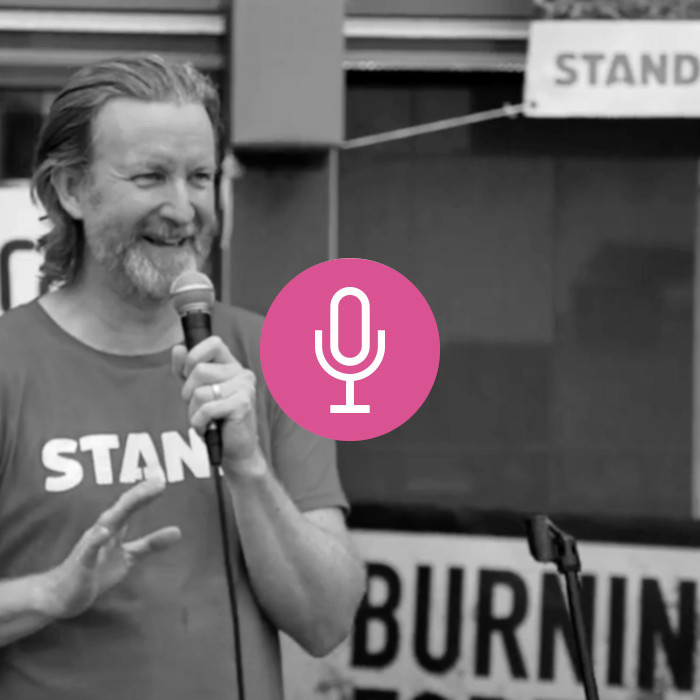Table of Contents
Most integrated assessment models seeking to develop emissions pathways for the world to stay under a global average temperature rise of 1.5˚C rely on the removal of significant concentrations of greenhouse gases from the atmosphere by 2050. These are sometimes referred to as “negative emissions” although more commonly as either Carbon Dioxide Removal (CDR) technologies or Greenhouse Gas Removal (GGR).
Why is GGR needed?
Most models suggest that on top of global efforts to reduce annual greenhouse gas emissions, GGR techniques will be required to tackle the 15-20% of the world’s emissions that are much more difficult to eliminate or reduce, in sectors such as aviation, shipping, agriculture or energy-intensive industries like steel making, where very high temperatures are required.
What are the specific techniques?
Many experts have two broad GGR categories: ‘Nature Based Solutions’ (or NBS) which involve the restoration of (for example) forests, coastal ecosystems and peat bogs to absorb and store carbon from the atmosphere; and ‘Negative Emissions Technologies’ (or NETs) which are man-made attempts to suck and store carbon and other atmospheric greenhouse gases.
Many different GGR techniques are being examined; below is a summary of the more prominent ones sometimes cited, alongside a personal assessment of where they may be in terms of development or value.
DAC (Direct Air Capture)
Sometimes also called (Direct Air Capture and Carbon Storage), these suite of technologies use engineered processes to capture and the store CO2 from ambient air. Huge volumes of air are sucked into a machine, and the CO2 is separated out for reuse or storage in different forms depending on the specific technique, such as underground storage or chemical processes to make plastics, rocks or fuel.
DAC is largely still in the R&D or ‘start-up’ phase with small scale demonstration pilots and very small operational plants, although companies at the forefront of developing the technology, including, Climeworks in Switzerland, Carbon Engineering in the US and Silicon Kingdom in Eire have announced increasing levels of technological progress, outside interest and investment. Governments are also beginning to support DAC at a small level, and the Treasury in the UK recently announced £100m of R&D funding.
Pros and cons?
Technologies are still very much in the R&D phase, and large uncertainties remain regarding technical limitations and cost. These uncertainties stem from fundamental physics – which tells us that separating molecules within gases is hugely energy intensive.
There is however great storage potential depending on the type of sequestration method. For example, if geological storage is used, the Royal Society suggests long-term (approaching indefinite) storage is possible.
As there is such a high energy requirement for the technology to run, access to adequate low-carbon energy and water will be needed to drive efficient capture and storage.
There are grounds for caution around the large material and energy inputs which would be sourced from the wider energy system and what the total life cycle impacts would be. These large energy inputs, with knock-on consequences, will occur even if capture rates or efficiencies are high. There is growing evidence that indicates capture efficiencies may be significantly lower than required, calling into question whether DAC technologies will even lead to net GHG removals.
There are still significant concerns that direct air capture is very expensive (particularly at the carbon storage phase), although many experts expect it to get cheaper. DAC extraction can cost more than $200 per tonne (Climeworks, for example, currently operates at a rate of $600 per tonne) while other methods, such as tree planting, are estimated to cost around $10 per tonne.
BECCS (Bioenergy with Carbon Capture and Storage)
BECCS is a technique that combines the burning of biomass (BE: primarily wood pellets from trees) to generate electricity and heat, with the capture of the resulting carbon dioxide emissions (CCS: Carbon Capture and Storage). As with some of the other GGR projects listed here, BECCS has often been directly cited in Integrated Assessment Models.
Among policy makers there is still relatively little knowledge of the combined technology (biomass burning itself is established as a practice, but CCS is not) and its development is still in the very early stages. For example, in the UK, the government is increasingly examining the use and development of BECCS and could become one of its future technological proponents and investors. UK based company Drax Group plc is exploring the technology but it is also at a very early stage in development.
Pros and cons?
Large uncertainties remain regarding the technical limitations and cost of BECCS and CCS itself. Again many of these uncertainties come from basic physics and the known high energy intensity of molecule separation.
Some concerns have been raised about the scalability of BECCS and around engineering efficiency: where the current challenges include improving energy efficiency relative to use of combining CCS with conventional power generation such as gas and CCS.
Recent Chatham House research doubts the core assumption underpinning the carbon negativity of BECCS, saying that “in reality this is not a valid assumption.”
Other questions have also been raised about the potential flaws and detrimental impacts in the use of BECCS including:
- The large inputs of wood required which may mean huge use of land and felling of trees: Chatham House has suggested, for example, that were all global uses of BECCS undertaken – as currently outlined in existing national climate plans – then it would require land use for the growing of bioenergy feedstocks equivalent to twice the size of India.
- Damaging impacts on biodiversity, food costs, and forest cover as result of such extensive land use.
- There are also concerns around the use of sustainable biomass and that much sourcing for use in biomass energy has come from old forests.
- Storage potential of BECCS is dependent on location and the UK for example is said to have good CCS potential due to its large North Sea oil and gas storage infrastructure.
Furthermore, and this is a point for all man made GGR technologies, there is research suggesting that the hopes and confidence put into GGR success has been overblown and has in turn “enabled policy prevarication” where this confidence has for governments “instead delayed the immediate acceleration of action to change behaviours or transform economies” and adapt to climate change.
Significant research has tried to quantify how putting faith into man-made GGR may in fact end up increasing total emissions and that the “combined effect of these unanticipated net additions of CO2 to the atmosphere is equivalent to an additional temperature rise of up to 1.4°C.” If accurate, this is a concerning assessment which suggests that policy makers should be focussing on immediate mitigation measures which are proven to reduce emissions rather than putting hopes into future ‘saviour’ technologies.
Balancing the use of bioenergy with other forms of land use such as food production will also be a challenge for policy makers. CCS research requires substantial investment in order to explore potential benefits and the cost benefit risks are high.
Biochar
This is the technique of partially burning biomass using pyrolysis (the absence of oxygen) to create a charcoal-like substance which stores carbon, is hard to decompose and that can then be placed in relatively high quantities as organic matter in soils.
Some experts regard biochar as a relatively established technology but because of there not being many pyrolysis facilities it is still not widely used.
Pros and cons?
- Research has demonstrated that the lifecycle emissions from creating biochar may be positive.
- Biochar can better reduce non-carbon dioxide greenhouse gases, notably nitrous oxide and can play a role in this.
- The effectiveness of biochar in removing carbon has also been questioned and some suggestions that it could actually increase methane emissions, depending on what soil it is used in.
- Large scale use of biomass for biochar would be needed for any potentially significant removal of carbon.
Afforestation and Reforestation
This is the practice of growing new trees as well as improving the management of existing forests. As forests grow they absorb CO2 from the atmosphere and store it in living biomass, dead organic matter and in their soils.
Afforestation, reforestation and forest management are already widely practiced throughout the world and have been for many years so there is a large body of knowhow on how to extend this practice. Many countries (such as Brazil. Mexico, China and India) are already committed to undertaking forestation through their Nationally Determined Contributions and the UN’s Clean Development Mechanism is one such scheme which provides a financial incentive for this to happen.
Pros and cons?
Forests have the capacity to absorb and store vast amounts of carbon almost indefinitely whilst maintaining biodiversity and complex wildlife ecosystems. Estimates for its storage potential vary from about 3 to 18 Giga tonnes of carbon per year.
As mentioned before, the cost of planting trees and maintaining or expanding existing forests could be relatively low with the FT citing a price of 10$ per tonne.
Environmental impacts of afforestation and reforestation are highly dependent on the management factors around them including types of planting, thinning and other management activities that are undertaken. A particularly significant issue is the use of the land that is being replaced. For example, replacing natural forests or other natural ecosystems with faster growing or higher biomass tree plantations (such as monocultures) could actually reduce biodiversity and store less carbon.
There are limits to the land area available for increased forestation, and this will have to be a consideration. The Royal Society in the UK, however, (as well as the Committee on Climate Change) have made recommendations that there should be a “rapid ramp-up…across large UK land areas”.
There are also of course risks should deforestation occur with then potentially significant amounts of carbon being lost.
Much research says that forestation could be one of the most effective forms of future GGR, in terms of its low cost, high carbon sequestration and positive co-benefits including for biodiversity (if monocultures are not favoured).
Habitat Restoration
Habitats such as peatlands and coastal wetlands can be restored to increase their ability to store carbon. Using this technique can also prevent large amounts of carbon or other greenhouse gases from being released through further degradation. It is estimated that Peatlands and Wetlands store up to 77% of the world’s “terrestrial biological carbon” and the UN estimates that peatlands currently store twice as much carbon as all the world’s forests and the burning and draining of peatlands each year accounts for 10% of global fossil fuel emissions.
Wetlands and peatlands have been managed by humans for centuries and there is already a huge amount of knowhow around preservation and restoration. Restoration learning has increased significantly in the last decade and there are a number of significant global restoration projects underway.
Pros and cons?
- Habitats have very high carbon storage or sequestration potential.
- Very little energy or water is required to restore ecosystems of wetlands and peatlands and compared to other forms of GGR land requirements are low.
- There are also a huge co-benefits from restoring habitats including protecting areas from natural disasters and floods (salt marshes acting as flood defences and tropical mangroves protecting from storms), boosting and maintaining biodiversity and restored ecosystems, improved water quality, and more pleasant natural environments.
Soil carbon sequestration
Soil carbon sequestration consists of changing farming practices so that carbon content in soil is increased and soil carbon loss decreased. The variety of methods include reducing the intensity of earth tillage, rotations of different crops, improved water management in agriculture, restoring grasslands and the creation of wetlands and ponds.
Most techniques in soil carbon sequestration are already in use on some lands and many farmers and agriculturalists have a knowledge of the suggested practices. France initiated the 4 per 1000 initiative in 2015 with the aim of boosting soil carbon sequestration practices.
Pros and cons?
- There are potentially high levels of sequestration but eventual limitations or saturation once techniques become more universal and soils reaches a higher level carbon concentration.
- No additional energy use is required and in most cases (aside from irrigation increases) no additional water is required.
- Co-benefits include better soil fertility and conditions, increased and more stable crop yields (and therefore food security), and water retention for crops.
Further reading
The Royal Society wrote a long and detailed peer reviewed analysis of GGR techniques in 2018, much of which was used to write our own summary, and it can be read here or here.
Chapter 7 of the United Nations Environment Programme (UNEP) Emissions Gap report provides a more succinct overview of GGR methods.
For more details on man-made GGR and its policy impacts re mitigation, this is a recent and interesting paper worth reading, by Duncan McLaren from the University of Lancaster.
The most comprehensive recent study around the usage of BECCS comes from Chatham House (who are now undertaking further research on the topic).
This October 2019 study published by the Royal Society of Chemistry explores the “health and climate impacts of carbon capture and direct air capture”.
Alasdair is coeditor of Land and Climate Review. He has worked in politics and government in Scotland, Spain, France, Brussels and London, and now works on climate policy and politics in the EU and UK.




